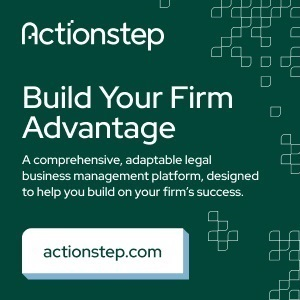Eden Niknafs, CLM, SHRM‑CP, Partner, Legal Operations at Clear Guidance Partners, agrees that traditional compensation structures are not the most effective: “The old and easiest method, counting billable hours and overall collections, is no longer the best practice for most firms.”
Niknafs says some of the issues with the traditional billable hour include discouraging efficiency, pitting clients and attorneys against each other and promoting competition instead of collaboration. There’s also a client service downside. “Holding billable hours or pure collections as the goal fails to provide KPIs [key performance indicators] and tools that align attorney and staff behavior in a way that promotes client service and whatever else the firm has identified as their mission and how they differentiate themselves from the competition,” she says.
ALTERNATIVE AND EMERGING COMPENSATION STRUCTURES
So if the established compensation structures are falling out of favor, what is replacing them? Rather than abandoning the old methods completely, many firms are mixing them with new concepts and creating hybrid models. For example, the largest firm in the United Kingdom, Clifford Chance, has recently modified its lockstep scheme by introducing a points system that compensates its top
performers according to certain performance criteria, while simultaneously recognizing seniority.
MacDonagh says she welcomes the recent innovations. “I think this is the direct result of the increasing sophistication of the business professionals in which law firms are investing,” she says, adding that an approach centered around data and metrics “is far more likely to produce competitive advantages, particularly with regard to talent/lateral acquisition, development and retention.”
The optimal compensation strategy is one that brings together the firm’s core values and incentivizes those behaviors that enhance client experience, drive firm growth and positively contribute to firm culture.
There are, of course, a plethora of ways to measure the performance of a lawyer for purposes of compensation, from billable hours to client satisfaction and business engagement, or even technical ability. A recent survey by LexisNexis found that the top metric used to measure attorney performance is their quality of work.
Regardless of the metric used, it’s important to ensure a firm’s values are reflected in any KPIs and associated compensation policies. “The optimal compensation strategy is one that brings together the firm’s core values and incentivizes those behaviors that enhance client experience, drive firm growth and positively contribute to firm culture,” Niknafs says. She says one way to do that is to create a program that allows attorneys to self-select the relative weight of each of the firm’s important KPIs. “In this strategy, attorneys and partners can choose their relative strengths, whether it is rainmaking, client service, firm promotion through speaking engagements, or a specific expertise, and weigh their compensation so that it supports the value that they bring,” she says.
THE RISE OF THE LEGAL CONSULTANT
Virtual law firms have also grown in popularity over the last few years, with fee earners increasingly drawn to the independence they offer. The attorneys in these firms, sometimes referred to as legal consultants, typically work in a freelance capacity, albeit under the umbrella of the firm, benefiting from legal insurance cover, marketing and back-office support. In terms of compensation, legal consultants generally keep the bulk of their fees and pay a commission to the firm.
Firms would do well to elevate and compensate by implementing a system that rewards the behaviors we want to encourage.
Belinda Lester, Managing Director at virtual law firm Lionshead Law, explains that her firm’s compensation model provides lawyers between 70% and 80% of the fees they generate in addition to bonuses based on the amount of work they refer to colleagues or on the number of other lawyers they bring on board. They also require clients to pay up front so the attorney can receive their compensation
immediately upon filing their invoice. “This way, we derisk being a consultant and can attract and retain committed experts,” she says.
THE IMPACT OF LEGAL TECHNOLOGY ON BILLING AND COMPENSATION
In addition to client demand, technological advancements are another factor ushering in the displacement of the billable hour with fixed fees. In particular, generative artificial intelligence (GenAI) is heralded as having the capability to dramatically improve the efficiency of fee earners, which ultimately means that the same client matter should theoretically take less time and therefore result in
reduced billable hours. Although GenAI providers proclaim this as a net benefit for lawyers and their clients, there is a counterargument that the deployment of this technology simply means that higher volumes of work will need to be undertaken to make the same level of profit — not to mention the often additional cost of licensing fees for the technology itself.
One method of surmounting this challenge for firms may be to levy fixed fees where possible. Indeed, a LexisNexis report suggests that almost 40% of private practice lawyers are considering adjusting their billing practices as a result of AI.
Joanne Brook, a Consultant Lawyer at Lionshead Law, warns that firms will increasingly need to adapt to GenAI to meet client expectations, especially before AI becomes able to provide legal advice and solutions — which some estimates say could be within the next three years. “Instant access advice from [AI tools] is going to fell certain legal services, providing free answers that are ‘good
enough’ and possibly even better than advice directly from a lawyer,” Brook says.
Current fee structures don’t incentivize lawyers to provide more value than an AI tool, meaning the traditional delivery of legal services will soon be out of step with how clients want to consume them.
Brook adds that current fee structures don’t incentivize lawyers to provide more value than an AI tool, meaning the traditional delivery of legal services will soon be out of step with how clients want to consume them. “The legal profession seems to be doing little to confront this risk either in terms of ensuring ‘reserved activities’ fall outside of AI advice or to rethink fees,”
she says. She notes that packaged services and all-round retainers that provide significant value and instant access to legal support from real humans must be available if lawyers are to remain relevant and continue to generate revenue in a new AI-centric world.
HOW TO CUSTOMIZE THE COMPENSATION STRUCTURE FOR YOUR FIRM
There is no one-size-fits-all approach to legal sector compensation; each firm needs to consider the optimal structure for its own culture and staff. Although lawyers move around a lot more than they used to, their years of experience should still be properly rewarded, so lockstep isn't going to disappear any time soon. However, other factors that measure the performance or value to the firm of
individual fee earners may need to be increasingly balanced against their seniority. And it might be that the virtual law firm eventually becomes the dominant model, leaving the matter of compensation to the individual legal consultants.
However billing structures evolve over the coming years, MacDonagh says client service should remain the guiding principle. “We should use knowledge, wisdom and data to improve and deliver work in ways that create highly satisfied, loyal clients,” she says. “Firms would do well to elevate and compensate by implementing a
system that rewards the behaviors we want to encourage.”





